Smartphone
-
- Supply Chain Technology: Debunking Digital Maritime Logistics Professional, Jan/Feb 2018 #59
Digitization without integration in the world of global shipping is a sure recipe for failure.
While most shipping companies would say that they have embraced the digital world, there are differing degrees of digitization. Some companies operate fully comprehensive systems that extend into every corner of their business. Others might use programs such as Microsoft Word to create documents or Excel for their finances. Both companies are digitized but clearly not to the same extent. A good analogy would be to compare an outdated mobile phone that can only make calls and send SMS messages with the latest all-capable smartphone.But more than this, a smartphone has the capability to take a photo and share it as a message or by social media; and to capture and store contact details from an incoming email. The outdated handset is digital but the smartphone is digitally-integrated – and that’s important.As people, we have become digital beings; expected to navigate our daily lives in a digitized, and digitally-integrated, world. Yet not all shipping companies have kept pace with the times. Many might be comprehensively digitized, but in 2018, digitization without integration is like investing in the latest smart TV but with no Wi-Fi at home.In Real PracticeAll companies will have an accounting package and most will operate systems to handle the administration of various commercial and operational requirements. But it’s less common for these systems to communicate with each other.In a fully integrated shipping company, the tariff system will capture all the complex information relating to individual customers, ports, terminals and cargoes, which can be a hugely complicated matrix of individual prices, restrictions, discounts and incentives. So when a customer requests a quotation, the quotation system automatically looks up the relevant tariff to create a bespoke and accurate quotation and show the yield. If the quotation turns into a sale, the system will, again, automatically create the required documentation, bills of lading, manifests and more. And once the vessel has sailed, an invoice will be automatically generated and that information will be posted to the accounts.During this process, if changes need to be made, a fully integrated system will automatically create manifest correctors, revised invoices and other updates. In other words, information will flow seamlessly from one activity to another without the need to re-enter data. Retyping leads to errors, errors lead to delays and delays disrupt cash flow and cost money.Just like apps on a smartphone, the fully integrated system does all of the hard work without the need for human intervention. The result is greater transparency, oversight and – importantly – a reduction in duplication and error across administrative processes.In context, even a small ocean carrier will be achieving revenues in excess of $100 million a year. So if 10 percent of all outgoing ocean freight invoices are wrong due to a lack of integration and the need to retype data, $10 million will be in dispute. Disputed invoices are often shelved by accounting departments and this causes a large and hard-to-manage hole in the cash flow.Challenging ChangesHow does this happen? Often it is through a process of natural evolution. Many shipping companies want to be independent, they start building their own software applications to deal with a specific process, such as quotations or tariff management. As the company grows, they find it challenging to maintain and update their systems and so decide to buy-in other applications to deal with other processes. A mix of bespoke and off-the-shelf applications mostly results in zero or little integration between them. And this means a huge amount of data is re-keyed.When challenged, IT divisions will often defend themselves with the usual cry of being under-resourced and struggling to maintain the systems already on-line – in other words, like it or lump it. Another, perhaps more reasonable explanation is that our IT colleagues are increasingly being confronted with a raft of external reporting regulations that must be complied with if a carrier is to remain in business. As a result, achieving internal integration, unsurprisingly, often takes second place.Obligations on carriers to report to external counter-parties are becoming increasingly burdensome. Operators must report to ports, terminals, customs, depots, clients and other outstations.If that were not challenging enough, the standards in place to exchange this information can be cumbersome. Almost all ports require electronic data interchange (EDI) messages containing roughly the same information, but often communication partners have different interpretations of structuring the messages – even sometimes within the same port. This means a carrier’s internal systems will need to incorporate dozens, or even hundreds, of different message formats in order to comply with regional and local requirements.The drivers for external integration are clearly much stronger than those to achieve internal integration. Some companies figure they can live without internal integration; but the question is, for how long? If a company’s internal integration is limited, it will eventually be sending out incorrect data externally, and that’s not a good place to be.Modern information technology systems and software applications, when used intelligently, can help deliver huge benefits. But care must be taken to select applications tailored to the specific needs of the company. Modern shipping software is modular, meaning operators can select only the applications they need to automate certain processes within their businesses. Each module seamlessly integrates with others to facilitate a flow of information across the company. Data need only be input once, thus reducing duplication, errors and confusion. Data is then shared across the company and with relevant business partners. This significantly reduces the administrative burden and introduces efficiencies across the business.The primary reason not all shipping companies take advantage of these solutions is because of the ungrounded assumption that moving to a new system will be time consuming, interrupt business or pose a risk.Managing Modern ITTwenty or more years ago, digitization was the prerogative of the very large shipping company with deep pockets. Today, it is a fairly simple process to buy specialist packaged or off-the-shelf solutions that suit the individualities of each company. These packages are the means to make digitized companies into digitally-integrated companies.The beauty of these applications is that they are built to facilitate total integration between each of the core processes – connecting systems through a single over-arching, fully connected and seamlessly networked entity. So, data flows seamlessly from tariffs to quotes, to sales to bookings to invoices to accounting and finally to management review.Other than the obvious advantages of less data input, reduced errors and the ability to deliver heightened customer service, these packaged solutions are available at a fraction of the price of building a bespoke system. In essence, they have leveled the IT playing field across the entire spectrum of shipping companies.Many shipping companies do not yet have these solutions in place and, to their detriment, are losing out to those that do. But by simply adopting a software solution specifically for the shipping industry, internally integrated businesses will be able to ensure external integration with every partner and outstation. In 2018, achieving comprehensive digitization and effective integration is now within the reach of the many, not the few.Softship, a provider of software solutions to the international liner shipping industry and port agency sector, offers its ‘LIMA’ software suite and associated applications to serve the needs of liner shipping carriers; ‘ALFA’, its software suite for liner agents; and ‘SAPAS’, a cloud-based software package for port agents.Softship products serve more than 120 companies globally and are designed to streamline tasks in order to deliver greater efficiencies to the full list of processes that comprise shipping. Softship additionally provides a range of business management tools that allow shipping executives to fully analyze their commercial and operational activities. Offered in a modular format which provides clients with flexibility to purchase or lease the solutions they need, the software can be modified to meet specific market or company requirements and is delivered as a locally installed application or through a hosted or cloud-based solution. www.softship.comThe AuthorLars Fischer is the Managing Director of the Asia Pacific headquarters of Softship. Lars began working for Softship as a software engineer in 1994. He became a business consultant and project manager in 1996 and has headed-up Softship Data Processing, Singapore, since 1998. He is responsible for Singapore’s commercial and technical staff of 25 and for the group’s sales and marketing strategy worldwide.(As published in the January/February 2018 edition of Maritime Logistics Professional) -
- Industry’s First Global Portable Satellite Hotspot, Iridium GO! Marine News, Mar 2014 #58
Iridium Communications’ Iridium GO! Is the first portable satellite hotspot that connects to any smartphone, extending voice and data coverage when out of range of cellular networks. Iridium GO! creates a satellite-backed Wi-Fi zone anywhere on the planet, enabling up to five smartphones to make calls
-
- HAL Retrofits VDRs on Fleet Maritime Reporter, May 2014 #57
,” VDR G4’s online monitor, provides a detailed picture of the ship’s position in real time on a chart and can transfer this playback to a notebook or a smartphone so that the captain can access an overview of the current situation at all times even from his cabin. Important information about radars, alarms
-
- Commercial Maritime's Great Migration to VSAT Maritime Reporter, Jul 2018 #42
price has settled and the infrastructure is in place to support the services and applications that run on it.Few if any people would really trade their smartphone for the cellphone that gave them only expensive phone calls and texts, cool though that seemed at the time. VSAT is that smartphone, and there is
-
- MTR Speaks with Harlan Doliner Ahead of His OINA Panel Marine Technology, Jan 2017 #10
data sharing, between ocean researchers and industry is undergoing fundamental, structural changes as accelerating technological advancement (think smartphones and smartphone apps, e.g.) facilitate the explosive growth in data and data points via “citizen science,” pushing coastal, oceanic and marine tech
-
- i911: Tapping Cellphone Location Data to Save Lives Marine News, Jun 2020 #48
the founder of Callyo.i911 is offered as a free service to first responders and provides fast, accurate cellphone location information. It pairs consumer smartphone technology with a simple web-based interface to locate mariners for search and rescue mission controllers in Coast Guard Command Centers. The distressed
-
- MLS: eLearning Re-thought Maritime Reporter, Dec 2014 #36
to come. In addition to continued development of the company’s core products, 2015 will see the launch of a mobile training app to address increased smartphone use and subsequent opportunity to extend the reach of training without extending the cost. “This is huge,” Goldberg said. Since MarineLMS is already
-
- Seafarers Trust in Technology Maritime Logistics Professional, Q1 2016 #48
by Futurenautics research, produced in association with Crewtoo, PTC, InterManager, BIMCO and ISWAN, reveals that 77 percent of seafarers now take a smartphone aboard. Initial results of a more recent survey carried out by the Seafarers’ Trust shows that while the majority of on-board communication
-
- Blue Tech Economic Engine Shifts into High Gear Marine Technology, Oct 2014 #40
. Talley said that many people use the datastream — from oil and gas companies planning deep ocean exploration to people creating windsurfing forecast smartphone applications — and don’t even realize where it comes from. “We want to learn about who is using the data, and what they are doing with it,” said
-
- 5 Minutes with Mike Read, President, Teledyne Marine Marine Technology, Jul 2018 #30
brands include: AGG, Bolt, Geophysical Instruments, RTS, and new tech for 2018 includes:Teledyne Real Time Systems (RTS) has released its new SmartPhone D System with an integrated 24-bit digital near-field hydrophone (NFH) system for real-time monitoring of near field acoustics.(As published in the
-
- The Busy Signal Maritime Reporter, Aug 2013 #20
. Earlier this year it rolled out some key upgrades to XChange, which now offers a range of new features to facilitate permanent remote access, allow smartphone usage onboard and provide improved VoIP capabilities. Users will benefit from a range of new features with XChange v 2.3 - specifically developed
-
- The USCG RDC & Electronic Aids To Navigation Maritime Reporter, Oct 2018 #14
, Alaska and other US locations such as Guam and Puerto Rico. However, this is not where the story ends. Today, recreational boaters can download a few smartphone apps to: identify and contact nearby vessels; alert the USCG of deficient ATON, navigational hazards, and environmental pollution; and, most importantly
-
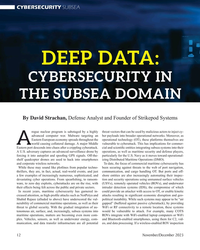 )
November 2023 - Marine Technology Reporter page: 12
)
November 2023 - Marine Technology Reporter page: 12autopilot and spoofng GPS signals. Off-the- particularly for the U.S. Navy as it moves toward operational- shelf quadcopter drones are used to hack into smartphones izing Distributed Maritime Operations (DMO). and corporate wireless networks. To date, the focus of commercial maritime cybersecurity has While
-
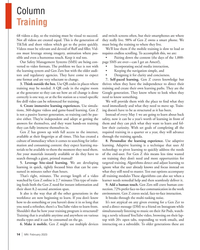 )
February 2023 - Marine News page: 14
)
February 2023 - Marine News page: 14Column Training 68 videos a day, so the training must be visual to succeed. and switch screens often, but their smartphones are where Not all videos are created equal. This is the generation of they really live. 98% of Gen Z owns a smart phone. We TikTok and short videos which get to the point
-
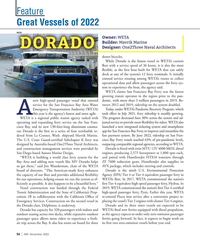 )
November 2022 - Marine News page: 54
)
November 2022 - Marine News page: 54to provide more ? exibility for riders. WETA also cisco Bay, and its new 130-foot-long aluminum catama- launched a new integrated ticketing system and smartphone ran Dorado is the ? rst in a series of four newbuilds or- app for San Francisco Bay Ferry to improve and streamline the dered from La Conner, Wash
-
 )
September 2022 - Marine Technology Reporter page: 74
)
September 2022 - Marine Technology Reporter page: 74sharing from their wealth of it’s a little late. experience and knowledge. Similarly, imagine a receive only/no reply acoustic release using a Smartphone with a playlist called “Releases”. Each Reader Feedback release command is downloaded as an MP3. At the prescribed Your comments and shared experiences
-
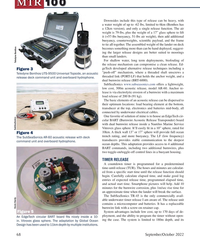 )
September 2022 - Marine Technology Reporter page: 68
)
September 2022 - Marine Technology Reporter page: 68should begin. Carefully calculate elapsed time, and make good log entries of expected release time, programmed elapsed time, and actual start time. Smartphone pictures will help. Add 10 minutes for the burnwire corrosion, plus 1m/sec rise time for an approximate time when the lander will break the surface
-
 )
May 2022 - Marine Technology Reporter page: 51
)
May 2022 - Marine Technology Reporter page: 51water col- AUV to be controlled and change parameter settings via mo- umn. The AUV has two deep-sea gripping systems attached to bile devices such as smartphones or tablets. In addition, the its ventral side that allow it to manipulate objects underwater. researchers investigated the possible use of arti
-
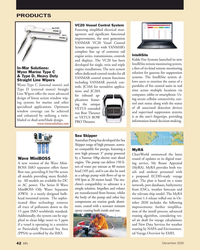 )
December 2020 - Marine News page: 42
)
December 2020 - Marine News page: 42of ? re control units in real trols: JC10A for sterndrive applica- time across multiple locations via tions and JC20A computer, tablet or smartphone. Us- for inboard ap- ing secure cellular connectivity, con- plications featur- trol unit status along with the status ing the unique of all associated
-
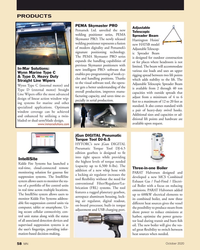 )
October 2020 - Marine News page: 58
)
October 2020 - Marine News page: 58readout, able ? re-suppression control units via different heat sources gives the vessel on-board processor, built-in torque computer, tablet or smartphone. Us- the possibility to produce steam from adjustment and USB charging port. ing secure cellular connectivity, con- shore power to reduce emissions
-
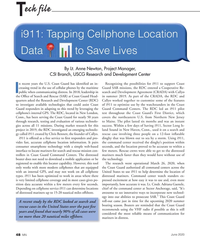 )
June 2020 - Marine News page: 48
)
June 2020 - Marine News page: 48a storm. Using i911, vides fast, accurate cellphone location information. It pairs the command center received the dinghy’s position within consumer smartphone technology with a simple web-based seconds, and the location proved to be accurate to within a interface to locate mariners for search and rescue
-
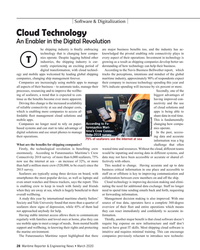 )
March 2020 - Maritime Reporter and Engineering News page: 28
)
March 2020 - Maritime Reporter and Engineering News page: 28in one place and accessible to Seafarers are typically using three devices on board, with staff on or offshore is key to improving communication and smartphones the most popular device, as well as laptops and collaboration between crew members on and off the ship. even smart watches and ? tness trackers
-
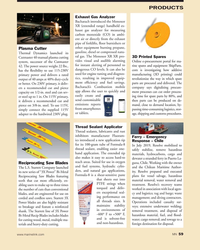 )
February 2020 - Marine News page: 59
)
February 2020 - Marine News page: 59be produced on de- it delivers a recommended cut and emissions reports mand, close to demand location, by- pierce on 3/8-in. steel. To use 115V, from smartphones passing time-consuming logistics, stor- simply connect the supplied 115V or tablets. age, shipping and customs procedures. adapter to the hardwired
-
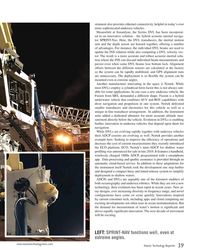 )
November 2019 - Marine Technology Reporter page: 39
)
November 2019 - Marine Technology Reporter page: 39mini-ADCP for shallow water pro? ling was announced for sale in late 2019. It features a handheld, wirelessly charged 1MHz ADCP, programmed with a smartphone app. Data processing and quality assurance is provided through an automatic cloud-based service. In addition to these adaptations for the instrument
-
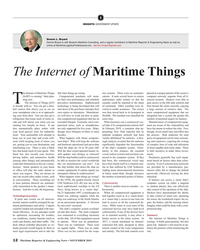 )
November 2019 - Maritime Reporter and Engineering News page: 12
)
November 2019 - Maritime Reporter and Engineering News page: 12allows you to see on shut down if the purchaser attempts their verted to render assistance. The cruiser a large amount of sensitive data. The your smartphone who is at or approach- own repairs or alterations. Manufactur- was then towed back to its homeport in more computerized equipment that are ing
-
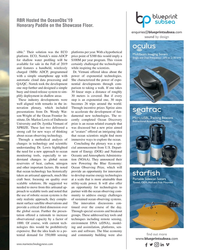 )
October 2019 - Marine Technology Reporter page: 37
)
October 2019 - Marine Technology Reporter page: 37and features a handheld, wirelessly while inspiring the scientists. charged 1MHz ADCP, programmed Dr. Virmani offered ideas about the with a simple smartphone app with power of exponential technologies. automatic cloud data processing and She characterized the power of expo- QA/QC. Nortek took the development
-
 )
July 2019 - Marine Technology Reporter page: 68
)
July 2019 - Marine Technology Reporter page: 68connect to the device and data can be streamed in cently introduced its C-BASS family of very-low-frequency real time directly to a PC, tablet or smartphone. Also avail- projectors. These are less expensive and smaller, lighter and able is the PAMGuard Plug-in for marine mammal monitor- designed to be
-
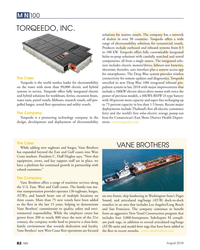 )
August 2019 - Marine News page: 82
)
August 2019 - Marine News page: 82. The integrated solu- tion includes electric motors/drives, lithium-ion batteries, electronic throttles, user interface plus a remote access app for smartphones. The Deep Blue system provides wireless The Case: connectivity for remote updates and diagnostics. Torqeedo Torqeedo is the world market leader
-
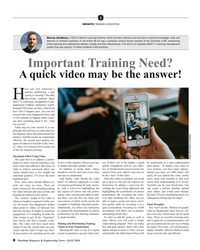 )
July 2019 - Maritime Reporter and Engineering News page: 8
)
July 2019 - Maritime Reporter and Engineering News page: 8not in the budget, a good be transferable to a more sophisticated short video that addresses that issue. In ic further and make another video. quality smartphone will be very effec- paid option. To deploy your video to order to achieve maximum effect, our In addition to being short, videos tive. It should
-
 )
June 2019 - Marine Technology Reporter page: 34
)
June 2019 - Marine Technology Reporter page: 34DCT can be operated with a simple touch screen of the extend widely throughout the world from oceans and lakes navigation plotter, tablet, smartphone or PC by a single per- to rivers, in-land reservoirs, port, channels and man-made ba- son. By reducing the amount of con? guration required by the
-
 )
Mar/Apr 2019 - Maritime Logistics Professional page: 21
)
Mar/Apr 2019 - Maritime Logistics Professional page: 21. shipping is the future of the maritime industry. They say it’s tainer shipping companies are recognizing this can bring tremen- as disruptive as the smartphone and the smart ship will revo- dous bene?ts to their operations. lutionize the landscape of ship design and operations. And yet, One of the main
-
 )
March 2019 - Maritime Reporter and Engineering News page: 52
)
March 2019 - Maritime Reporter and Engineering News page: 52and the functionality of the ECDIS unit on a large commercial ship is ? nally approaching the ease of use, clarity and accuracy of a common smartphone. eGlobe G2+ functionality is based on ChartWorld’s eGlobe G2 system. 52 Maritime Reporter & Engineering News • MARCH 2019 MR #3 (50-57).indd
-
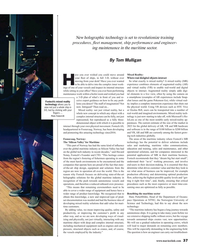 )
February 2019 - Maritime Reporter and Engineering News page: 37
)
February 2019 - Maritime Reporter and Engineering News page: 37work within a boiler room and wished you had tal elements to a live view, often by using the camera on a 3-D plan of what’s in front of you and re- a smartphone (examples of AR experiences include Snap- ceive expert guidance on how to fx any prob- chat lenses and the game Pokemon Go), while virtual real- Fostech’s
-
 )
November 2018 - Maritime Reporter and Engineering News page: 24
)
November 2018 - Maritime Reporter and Engineering News page: 24the open-plan errors lead to delays and delays disrupt ping software is modular, meaning ship- Changes caused by unforeseen events of? ce, or the smartphone, or the laptop, cash? ow and cost money. ping companies need only select the can be simulated to provide estimates many shipping companies are
-
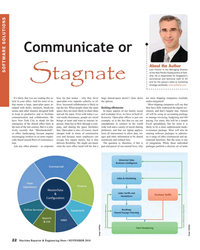 )
November 2018 - Maritime Reporter and Engineering News page: 22
)
November 2018 - Maritime Reporter and Engineering News page: 22is the fact that we use our paying. For some, this will be a simple emergence of the shared of? ce back at person. Data has to ? ow through a com- smartphones to connect to the world Excel spreadsheet, but for most it is the turn of the last century. But it is rela- pany, and sharing the space facilitates
-
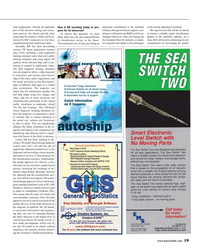 )
October 2018 - Maritime Reporter and Engineering News page: 19
)
October 2018 - Maritime Reporter and Engineering News page: 19a 3D model- based design approval viewer which sup- ports multiple platforms such as PC (MS Windows, linux) or mobile devices such as tablet or smartphone (Android, iOS). This means that the same 3D model and corresponding comments from the plan approval surveyor can be accessed on the mobile devices
